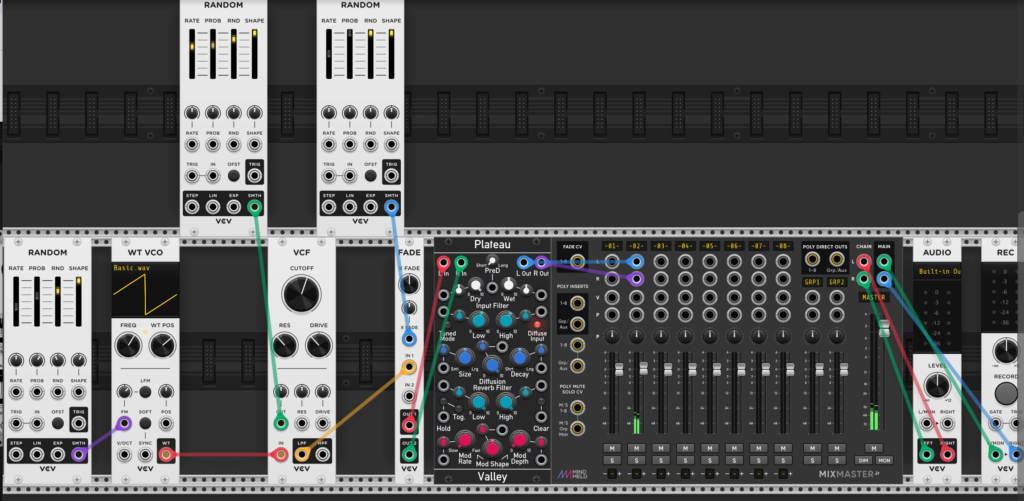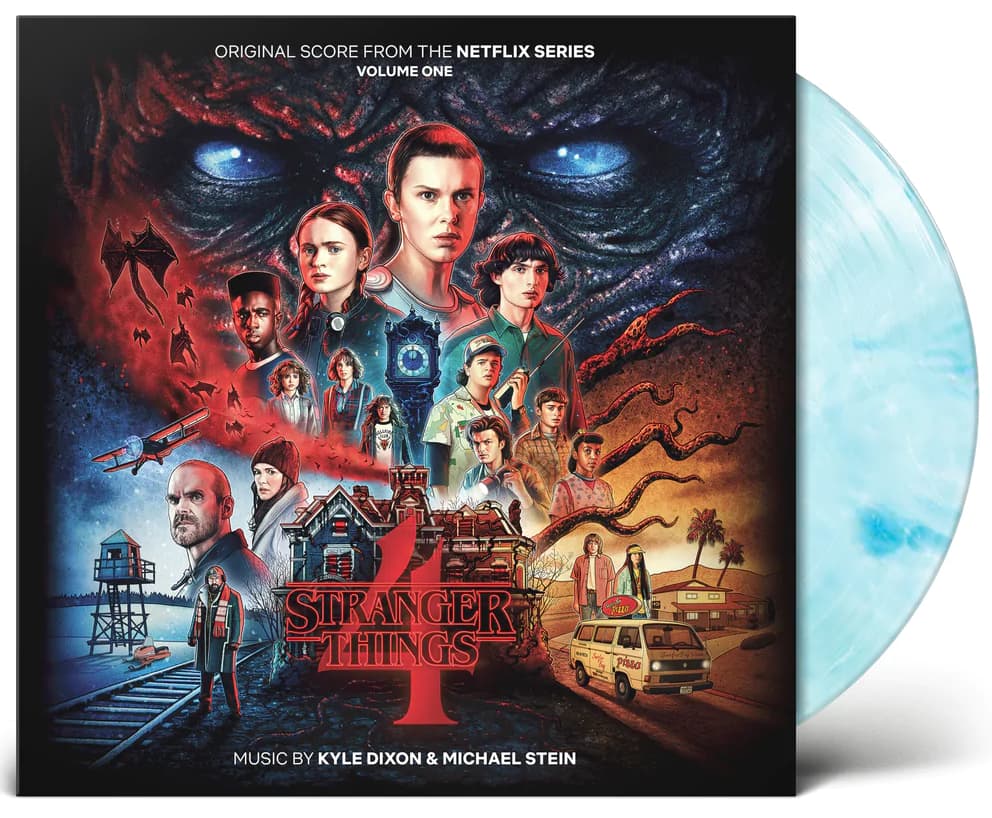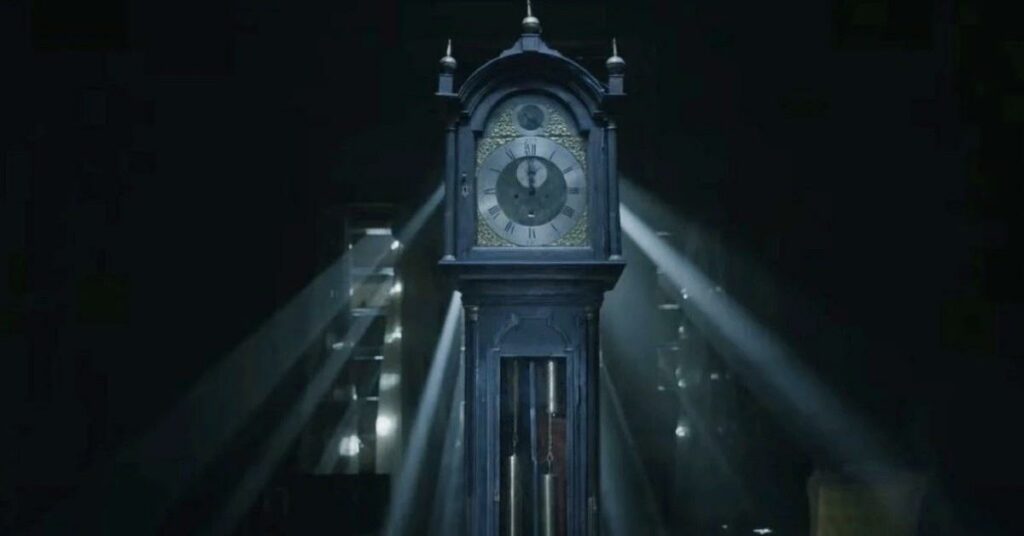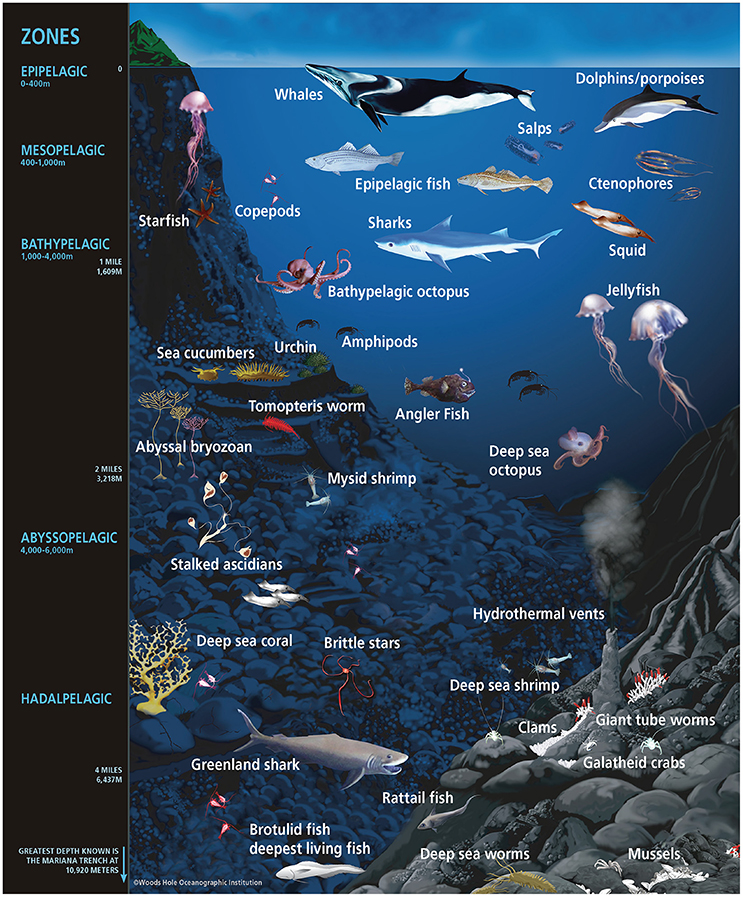I divided a sound design into several parts, each of which tells a slightly different story about life in the ocean. The main character is a whale who takes a listener on a journey from the sunlight zone and dives deeper into the twilight zone, encountering various species living in different parts of the ocean. Next, the midnight zone is introduced, where a sperm whale engages in a battle with a giant squid. In the next section, anthropogenic, geophysical, shipping, and sonar sounds are introduced. It begins with a few sound spots blending with the oceanic soundscape and escalates into a symphony of noises. Whales attempt to communicate among the cacophony but struggle to do so. The noise is disrupted by a celestial voice from above, bringing hope and encouragement not to give up but to fight for a better place in the world.
The entire composition was divided among three ambiences: A, B, and C, each corresponding to different layers of the ocean, along with Sound FX A, B, and C. Sound FX A represents the sounds of whales, Sound FX B correponds other oceanic species such as jellyfish, squid, anglerfish, and octopus, while Sound FX C was intended for geophysical and human-generated sounds.
Waves:
>pink noise signal generator doubled and treated with automated EQ (with LPF between 900 Hz and 2 kHz) and HPF till 200 Hz. To create movements I automated the volume. At the end one of the track was sent to reverb (Dverb with large decay: 8.7 sec)
Whales:
> Humpback VCV Rack (filer oscillation with manipulation of resonance)
> Blue whale: low frequency sinusoidal (below 100 Hz) and wobble bass sound
> Sperm whale: foleys (recordings of jar covered with foil and plastic bag) resembling clicks. Modified with impulse response reverb (MC convolution EZ)
> Violin glissandos, strongly filtered out (below 500 Hz) and violin melodies (whale song)—> repitched and filtered out
> Tam Tam (treated with Dynamic EQ: 293 Hz)
> Re-pitched, automated clicks (sperm whales)
Oceanic soundscape:
> Sunlight Zone: mostly sounds of waves with underwater bubbles (Soundly library), EQ automation (above water vs under water), reverb automation
> Twilight Zone: layers of sounds of dishwasher with LPF till 126 Hz and boosted resonance 170 Hz, ring tones around 498 Hz, layers of underwater bubble sounds (from Soundly library)
> Midnight zone: layers of low rumbles, ambiences of underwater sounds that remain silence (from Soundly library)
Oceanic species:
> Giant squid (in midnight zone part): sounds of currency, electricity and sparks
> Angler fish: sounds of teeth clicking, with rubber blade effect from H3000 harmonizer and impose response Convolution EZ
> Jelly fish: sound of a thin leakage of water from a mountain spring with some heavy dropouts: equing LPF 18.6 kHz -12 dB and boasted LMF 510 Hz +3.1 dB, treated with MConvolutionEZ
> Octopus: Splat, slimy sound, movements, 21 kHz +3.3 dB, treated with MConvolutionEZ and MWobbler
> Shrimps: quick, sparkly movements, strongly equed with LPF and HPF (leaving a spectrum of frequency 564 Hz – 4.1 kHz)
> Oceanic worms: sound of butterfly wings
Environmental and anthropogenic noises:
> Explosions from volcano eruptions: low hits with a long reverb tail
> Wind whistle
> Earthquakes: metal rattle
> Dropping anchor into the water: Firework like sounds and explosions
> Sounds of heavy ships and vehicles
> Piercing sounds of drilling
> Seismic (oils and gas) bloops
For all sounds, I applied extensive EQ and volume automation, particularly for low-pass filter.








